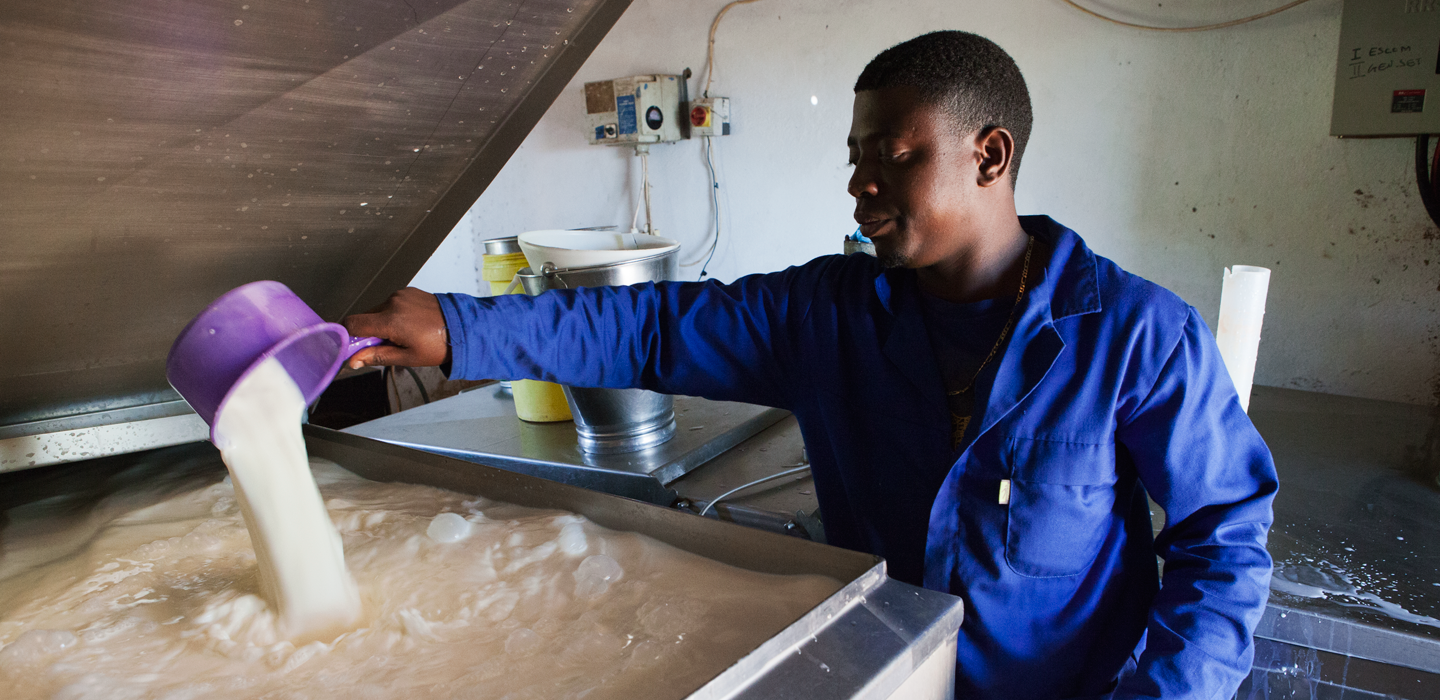Measuring youth participation in agriculture in Tanzania and Malawi
IFAD Asset Request Portlet
Asset Publisher
Measuring youth participation in agriculture in Tanzania and Malawi
Estimated reading time: 4 minutes
The specter of the aging farmer brings up questions about whether youth are leaving agriculture. When diving into the data however, a few initial questions loom large, especially the most essential: 'Who is a farmer?' This seems like a simple question, but different approaches of study will yield very different answers.
In our recent IFAD Research Series study we looked at the dynamics of youth employment in agriculture in Tanzania and Malawi.
Who is a farmer anyway?
As many understand, a farmer is someone who works in agriculture. But what if someone works a few hours a week in a family farm and five days a week as a professional employee? How do we distinguish between a person who helps on the weekend versus someone who makes farming a profession? Can any participating family-member be a farmer, or only the primary decision-maker for agricultural activities?
Asking each person about their primary occupation does not always help. Many individuals do not have a single occupation and engage in a number of activities to generate income. Some people may also not consider farming as an occupation even if they are heavily involved. Indeed only 48 per cent of 'principal operators' – i.e. the most influential decision-makers on farms – in the United States reported farming to be their primary occupation.
As such, researchers increasingly define the occupation of an individual based on the totality of information they provide about their economic activities. There are a few options to categorize occupations: i) the amount of income that was earned relative to all other activities; ii) the amount of time spent in each activity, iii) consistency of occupation over time. Each option can lead to different conclusions, e.g. rates of participation in farming are usually higher than rates of total working time spent in farming due to seasonality and pluri-activity in rural areas.
The ultimate choice must be based on the question one is trying to answer. Motivated by the IFAD Rural Youth Action Plan's emphasis on expanding employment opportunities for youth in the rural agricultural sector, we opted to identify what percentage of individuals, between 15 and 24, used farming as their only source of income generation, i.e. single-occupation farmers. Most importantly, we consider everyone's occupation, not just one person identified as most important by the household.
Are youth leaving agriculture?
Thanks to data collected for the same people over multiple years from the World Bank's Living Standards Measurement Survey - Integrated Survey in Agriculture (LSMS-ISA), we are able to assess overall participation, as well as consistency over time. Given the assumption that youth are highly mobile, this is important information to make sure that we can identify those committed to farming, at least over the short term. When looking at the consistency of participation over a two year period per country, some takeaways stand out:
- The majority of rural youth in Tanzania and Malawi are engaged in single-occupation farming. Participation, however, is decreasing in Tanzania, and increasing in Malawi.
- Of those who started in farming, more than half stay in farming.
- Youth are generally more likely to enter farming than move to any other sector (combined) or stay in their own sector
- Young adult participation in farming is much lower than youth participation in farming.
These results are consistent with other studies covering sub-Saharan African countries that used alternative approaches to define participation in farming.
Opportunities for investment
Tanzania and Malawi offer two very interesting case studies for consideration, particularly given their very different development stories. There are observable differences between the countries. For example a higher share of rural youth and young adults participate in agriculture in Malawi compared to Tanzania, which has a substantially higher GDP per capita. This is consistent with expectations of rural and national transformation, as countries diversify from agriculture towards more profitable services and manufacturing. Most relevant for the rural agricultural sector, is value addition through the agri-food system.
Participation in the wider agri-food system is substantial and increasing in both Tanzania and Malawi. The agri-food system has been conventionally defined as encompassing both farming and agri-food enterprises. It includes all supporting industries required for a vibrant agricultural sector – from input providers, veterinarians, transportation to end-users, such as grocers and restauranteurs. Without demand or supporting industries, it is impossible for farming to succeed.
In Tanzania, rural youth participation in the agri-food system increased from 60 to 63 per cent, while in Malawi participation increased from 73 to 80 per cent. Within these numbers, we are able to break it down by engagement in an agri-food enterprise and participation in farming. Participation among rural youth within agri-food enterprises doubled from 10 to 20 per cent in Tanzania, while staying more or less consistent at 15 per cent in Malawi.
While it may appear that more Malawian rural youth are engaged in agri-food enterprises, this number masks considerable mobility into and out of the sector, notably into and out of farming. This ultimately leads to a different development story, where agri-food enterprises are growing in Tanzania and less stable in Malawi.
What should we learn from these numbers?
Overall it is still difficult to determine if participation in farming is due to the attraction of the sector or as a safety net. While participation among youth is substantial, we hypothesize that farming largely serves as an alternative to unemployment. For all the concern that youth are uninterested in farming, investments in agri-food system offer a unique opportunity to both target this demographic, and to support those that do stay in farming.
Publication date: 05 August 2019

